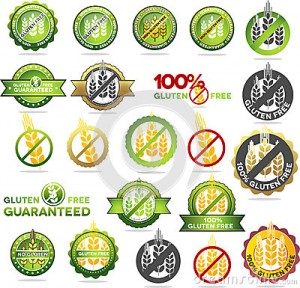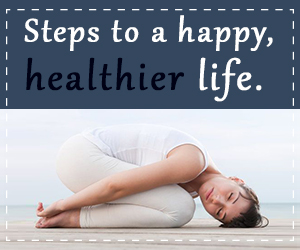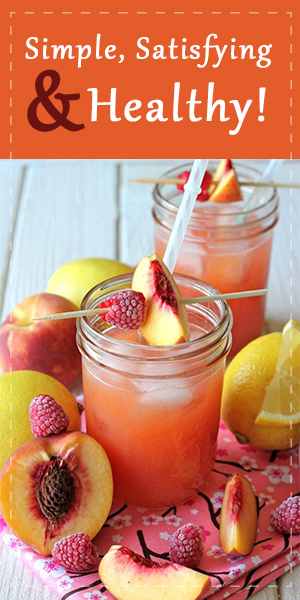Simple Steps to Ditching Gluten
Last week I wrote about some of the health concerns that typically arise from eating gluten if you have a gluten sensitivity in the post Should you Break up with Gluten? The thing with gluten is that it’s addictivley delicious, I mean just the smell of fresh baked bread is intoxicating and it’s everywhere. Unless you have Celiacs disease, the symptoms of gluten sensitivity are ones that you can easily brush under the rug and make other excuses for. You may get your doctor to write you a prescription for that itchy rash or take gas-x for the bloated feeling, or maybe even pop a Tylenol for the headache. Unfortunately, we live in a culture where popping a quick pill is the norm and changing your diet to get to the root of the problem isn’t something that’s done very often. But it’s SO worth it, after all, your body is your temple. Think of it this way, if you have a gluten sensitivity and keep eating gluten it’s like putting little tiny holes in your body, creating unnecessary wear and tear, and over time it’ll catch up with you. Why not stop the damage now?
Let me do a quick re-cap of some of the most common symptoms of gluten intolerance: migranes, gastrointestinal issues (diarrhea, gas, constipation, heartburn), skin rashes, joint pain or rheumatoid arthritis, chronic fatigue, fibromyalgia, brain fog and menstrual cramps.
If you’re ready to give gluten free a try here’s how to do it.
Try an elimination Diet. It’s the easiest way to get to the root of the problem. If you want to be really ambitious you can eliminate other foods that may be bothering you at the same time. Common allergens, besides gluten, are dairy, soy, corn (especially non-organic corn) and eggs.
Change your diet for 3 weeks. Once you’re past the first 10 days you’ll be so used to it that it won’t be a big deal. The reason you want to stay gluten free for this long is to give the gluten time to get out of your body (there are varying opinions on how long it takes, some say 10 days some say 23) and then give yourself time to get used to feeling what it’s like to be gluten free. When I work with clients I usually have them do a 10 days cleanse and they already begin to feel the effects of being gluten free.
Journal. Don’t shortchange yourself, do the whole 23 days so you can really tune in to your body. Notice your symptoms, does your tummy feel better? is your thinking clearer? are your headaches less frequents and your joints feeling better? Take some time at night to write down how you felt that day and where you saw any improvements.
Reintroduce gluten if you must. If you’re not sold on going gluten free you can re-introduce it after you’ve gone 3 weeks without any gluten. This will give you an idea of the kinds of symptoms it caused for you. The effects of gluten will be more pronnounced after you’ve experienced a gluten free body, so if you typically got a gluten headache it might be a little worse this time around. Some people feel the effects of eating gluten right away, some feel it after eating it for about 2-3 days. Check-in with yourself and be honest about how you feel. And then you can make an informed decision about wether or not you should be eating gluten.
Cheating takes a long time to overcome. If you decide you’re ready to go gluten free don’t forget that it can take 10 days to feel the effects of going gluten free. So if you decide to go gluten free but cheat, or have hidden gluten, even just once a week you may not be giving yourself enough time for it to leave your body. Basically, if you decide you want to have your favorite gluten filled meal every sunday, you’re never giving your body to get rid of the symtopms of gluten, so whatever it was that was bothering you won’t go away. You may try to tell yourslef “I’m gluten free most of the time but it doesn’t really make a difference” but you’re just cheating yourself because you’re body is still constantly dealing with the effects of gluten in your body.
LEARN TO SPOT HIDDEN GLUTEN. This is the most important step before trying an elimination diet or making the decision to go gluten free. There is gluten hidden in more places than you probably imagine and if you don’t eliminate ALL of it you’ll never rid your body of it and you’ll never know what your body feels like when it’s out of your system.
Here is a great guide to helping you identify hidden sources of gluten straight from the Udis Gluten Free website.
“Know common “hidden” gluten ingredients:
Learn red flag ingredients that you may spot on labels. There are the obvious ones, such as “wheat flour,” that can be hidden in unsuspecting products like licorice candy, chips, and soup. Products that contain wheat should, by law, be labeled as such in bold letters, as it is one of the top eight allergens. However, it seems that not all ingredients that are wheat-derived are labeled, and there are other non-wheat sources of gluten.
Red flag ingredients include:
- “Barley Malt” or “Malt” – Examples: Rice Krispies, Cornflakes, Lindt Truffles
- “Soy Sauce” – Contains wheat unless the item is made with gluten-free “Tamari” soy sauce. Also, I used to think that all Tamari-style soy sauce was gluten-free, but recently saw that Kikkoman makes a non-gluten free Tamari soy sauce—that’s a good one to ask your waiter or friend if you’re a dinner guest.
- Worcestershire Sauce – I’ve found this ingredient to be particularly sneaky as some versions contain gluten and some don’t. I once had a housemate tell me “Hey, you should eat this chili with us, it’s gluten free,” and then watched him pour a whole bottle of Worcestershire sauce into his bubbling pot. It’s easy for people to not even wonder whether a sauce has gluten in it or not, so this is the kind of ingredient that it might be good to ask about specifically.
- Wheat, barley and rye in their Latin names: Triticum vulgare (wheat), Hordeum vulgare (barley), Secale cereale (rye),Triticale (cross between wheat and rye), and Triticum spelta (spelt, a wheat variety)
- Finally, there are several common ingredients whose gluten content is debated or for which there are gluten-free and gluten-filled versions. These include: Dextrin, Maltodextrin, Modified Starch/Modified food starch, Natural Flavor, and Artificial Flavor. Some companies are now labeling whether their products’ food starch comes from corn or wheat, but many remain unlabeled. Dealing with these ingredients may be a matter of avoiding them “just in case” or testing products that have no other signs of gluten on an individual basis.
Know what kinds of unsuspecting foods might have a gluten ingredient:
If you’re like me, you read any label you can get your hands on before putting anything in your mouth. If you don’t read every label, keep in mind the types of products that commonly have hidden gluten (those labels you might want to start reading!): canned soup, salad dressing, chips, ice cream, noodles (yes, some rice or buckwheat noodles have added flour), and pretty much any “snack” food. Conveniently, the foods that you know are the safest—unprocessed foods such as fresh fruits and vegetables—are better for your health anyway!
Know the taste and appearance of gluten ingredients:
Ideally, you’d know whether something contains gluten before it’s sitting in front of you ready to eat, but sometimes miscommunication occurs. I’ve found this kind of mishap common when traveling with a language barrier or where “gluten-free” is not a well-known concept. You may want to “double-check” (ask about specific ingredients that you suspect might be in the food) when something suspicious comes up. I keep an eye out for:
- Dark-colored and salty sauces (suggests soy sauce might be an ingredient)
- Thick and/or opaque sauces (may have been thickened using flour/be roux based)
- Creamy soups (may use flour as a thickener)
- Foods that appear to have been deep-fried (may have been fried in the same oil as gluten-containing products, may be breaded)”











